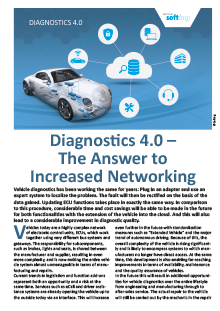ODX ISO 22901-1 – Open Diagnostic data eXchange
Standardized Exchange of Diagnostic Data Based on ODX

The standard ODX ISO 22901-1 (Open Diagnostic data eXchange) describes an XML format for exchanging diagnostic data. It contains both diagnostic specifics and flash data for individual ECUs, as well as information on accessing the entire vehicle network.
The data is usually processed on a D-Server in accordance with ISO 22900-3.
Softing Experience
Softing has not only actively driven standardization since the beginning, but also implemented the standard from the very beginning. This is why we claim to be the supplier with the greatest experience. Using the ODX description as a basis, we have realized numerous solutions for a whole range of different applications, e.g. editors, creation systems for test environments, checkers etc. In addition, we have immense experience in consulting, and in defining and implementing ODX processes and in the necessary migration scenarios.
ODX Solutions
| Products | |
| Softing DTS.venice | ODX Data Editor and Checker |
| Softing SDE | Implementation of the standards ODX v2.0.1 and ODX v2.2 (access via ASAM MCD-2D v3.0) |
| Softing DTS.automation | Simple access to ODX data for testing and automation systems with the technologies COM/DCOM, OPC, LabView |
| Softing DTS.monaco | Application-oriented development tester for validating ECU functions on the basis of ODX |
| Softing TDX | For the development of workshop testers based on ODX |
| Softing TCS | Diagnostic simulation with the possibility of automatic creation of simulations based on the specification |











